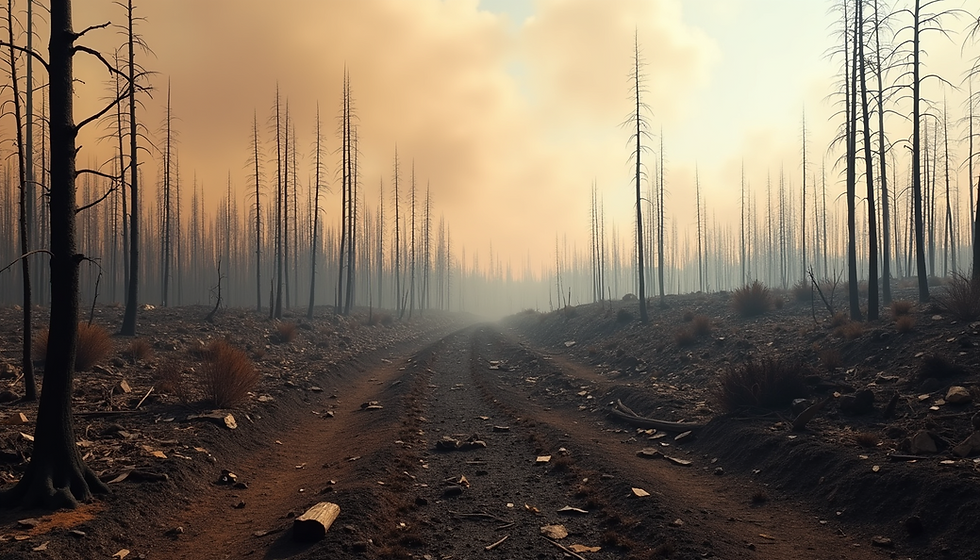Empowering Communities: A Strategic Guide to Advocating for Clean Water Solutions
- Mike Walbert
- Jul 31
- 4 min read
Access to clean water is not just a privilege; it is a fundamental human right. Advocating for clean water can lead to meaningful change in your community. Whether you are a concerned citizen or a passionate local leader, this guide offers practical tools and insights to help you make a difference.
Understanding Water Quality
To advocate effectively, it is vital to understand your community's water supply. Water quality can be influenced by factors such as pollution, aging infrastructure, and specific local regulations.
Testing Water Quality
The first step in your advocacy journey is assessing the safety of the water in your area. Here’s how you can proceed:
DIY Testing Kits: You can purchase water testing kits from local hardware stores or online. These kits often test for common contaminants like lead, bacteria, and nitrates. For example, a testing kit may alert you to lead concentrations exceeding the 15 parts per billion limit set by the EPA.
Local Water Reports: Most municipalities publish annual water quality reports that can be found on their websites. Reviewing these reports helps you understand contaminant levels. For instance, if a report reveals that 80% of samples from last year did not meet safe drinking standards, this information can be crucial in advocating for change.
Community Water Monitoring: Gather people in your area to collectively collect water samples from various locations, such as playgrounds, schools, and homes. This data can create a compelling case when you approach local officials.
Engaging with Local Authorities
Once you understand the state of water quality in your community, it is time to reach out to local officials. Engaging with government representatives can seem intimidating, but being prepared will give you confidence.
Contacting Officials
Know Your Representatives: Identify officials responsible for water quality in your area—this could be city councilors or state representatives. You can find their contact information on local government websites.
Draft a Clear Message: Include specific concerns such as test results and personal experiences regarding water quality in your correspondence. For instance, mentioning how unsafe drinking water affected your family can add urgency to your message.
Follow Up: Persistence is key. After your initial contact, follow up to ensure that your concerns remain a priority. This demonstrates your commitment, making it less likely for your message to get overlooked.
Organizing Community Efforts
Your advocacy efforts will become more potent through collective action. Organizing local groups can create momentum for advocating cleaner water practices.
Building a Coalition
Gather Like-minded Individuals: Connect with friends, neighbors, and local organizations that care about water issues. You can find support through community centers, social gatherings, or town hall meetings. Hosting an initial meeting can yield dozens of interested participants willing to take action.
Create Action Plans: Brainstorm strategies that you can implement as a group. Examples include organizing community clean-ups or launching campaigns about water conservation tips that could save households up to 30% on their water bills.
Use Local Media: Local newspapers, radio stations, and websites can help amplify your message. An article detailing your coalition’s efforts to improve water quality can attract more community members to join you.
Promoting Policy Changes
Advocating for clean water requires raising awareness and taking actionable steps toward policy changes. Once you have organized your coalition, you can push for changes at the policy level.
Advocacy Campaigns
Identify Policy Goals: Clearly determine the specific changes you want to see. This could include stricter limits on pollutants, increased funding for water treatment facilities, or community education programs to inform residents about water conservation.
Petitions and Public Hearings: Start a petition to gather community support for your cause. Present your concerns at public hearings, which offer a valuable platform for raising your voice and connecting with decision-makers.
Lobbying Efforts: Organize advocacy days where community members meet with local lawmakers to discuss water issues. Invite residents to share their experiences, making your case more personal and relevant.
Raising Awareness in Your Community
Educating your community about water issues is crucial for long-lasting change. The more people understand, the more they can support advocacy efforts.
Educational Programs
Workshops and Seminars: Collaborate with local experts to organize events focused on water quality. Topics such as the significance of clean water, DIY testing methods, and simple water-saving techniques can empower residents. Consider hosting a workshop that teaches families how to reduce their water usage by 20%, making a significant difference over time.
Interactive Resources: Develop brochures or infographics that present critical information in an engaging format. Distributing these in schools, libraries, and community centers can help raise awareness among many residents.
Social Events: Plan fun, community-oriented events such as clean-up drives or eco-challenges that highlight the importance of clean water. These events can not only foster community spirit but also engage more citizens in the cause.
Taking Action for Clean Water
Advocating for clean water requires dedication and collaboration from all community members. With the right approach, you can be instrumental in securing access to this vital resource for everyone.
Start by understanding water quality, engaging local officials, organizing community efforts, promoting policy changes, and raising awareness.
These actionable steps can create a lasting impact, making your community healthier and a model for others to follow. Every effort counts. Together, we can build a future where clean water is truly a reality for all.




Comments